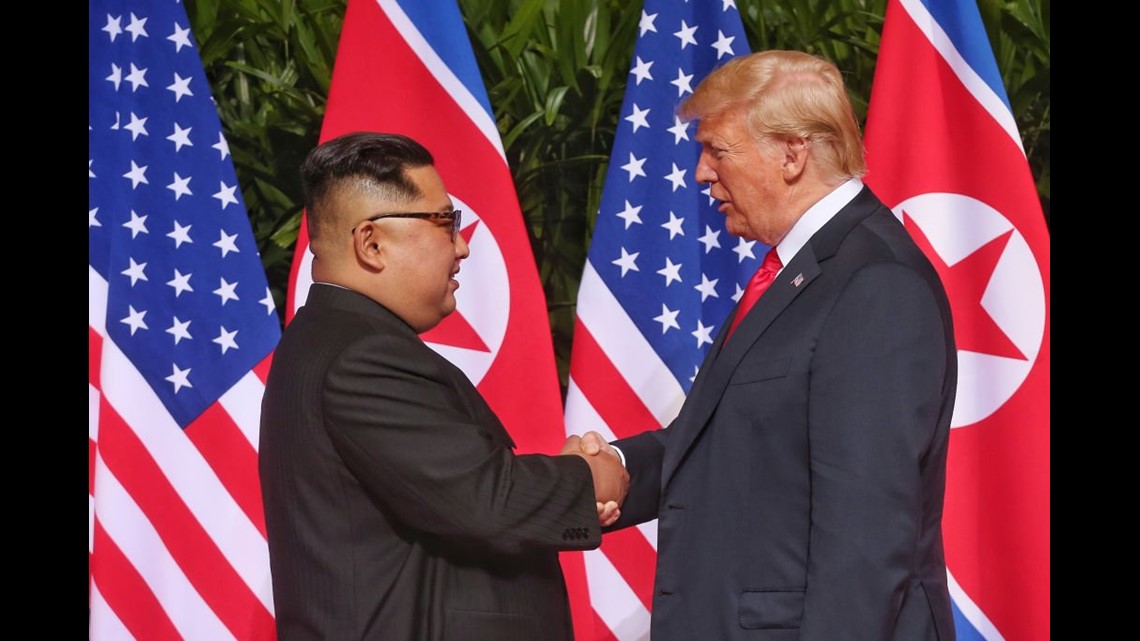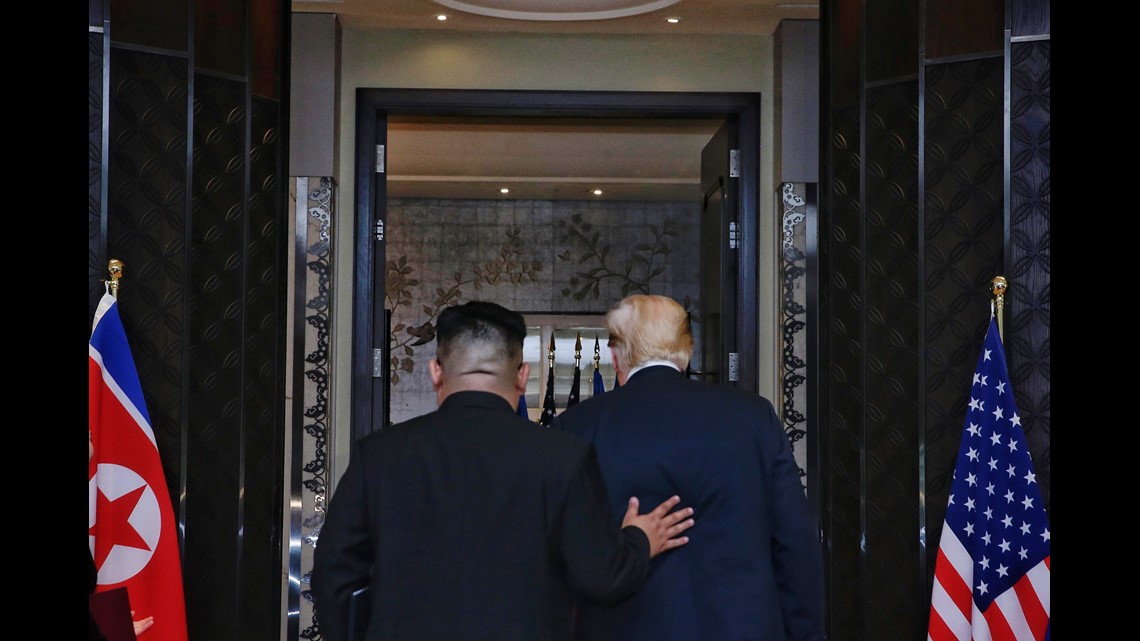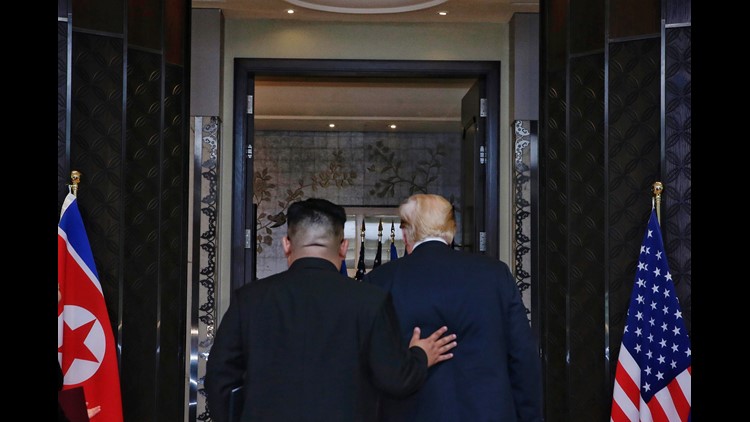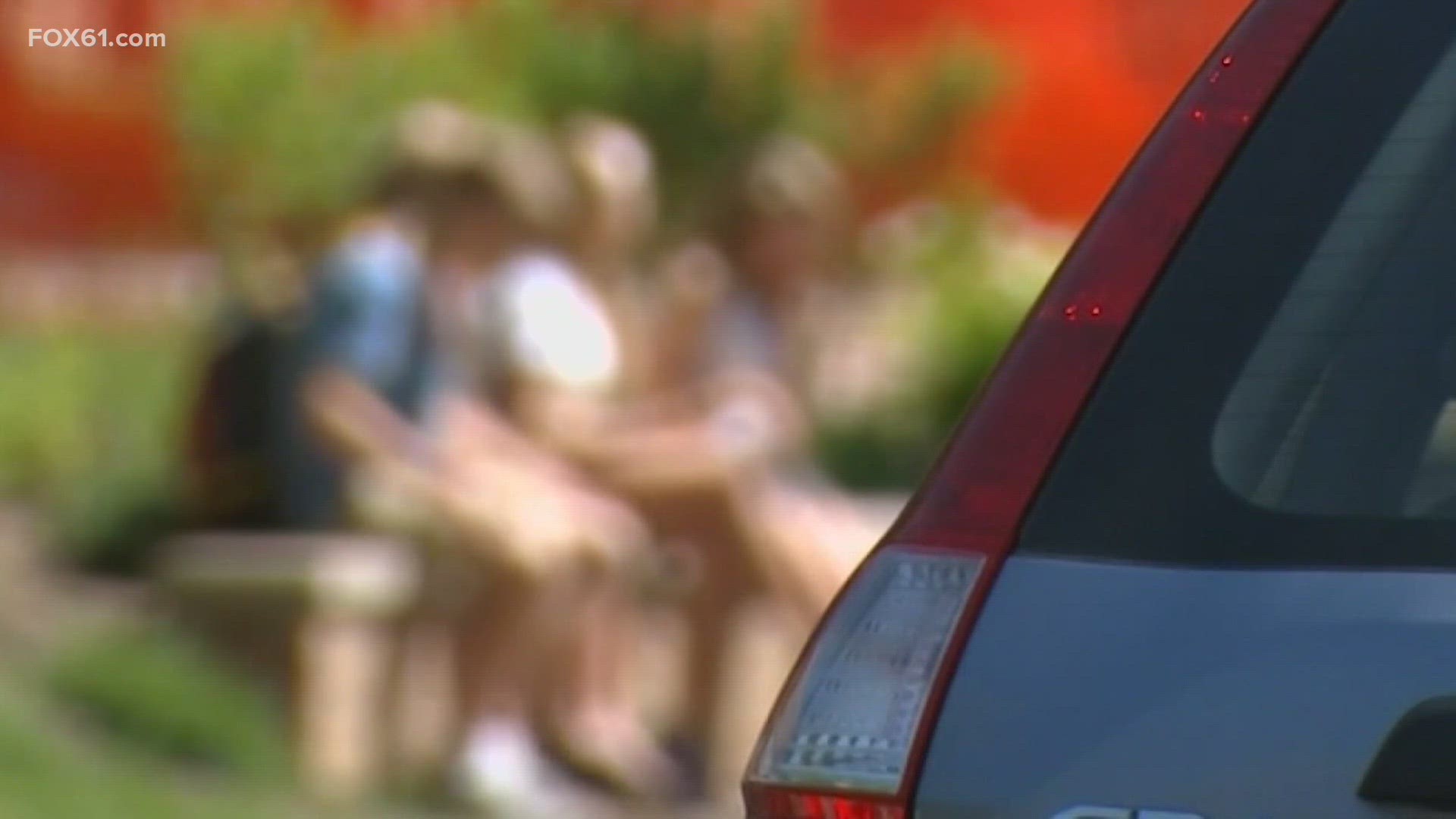SINGAPORE — With a handshake, the leaders of the US and North Korea broke through decades of antagonism, signaling a willingness to stake their reputations on forging a new relationship between the two nations.
It was a moment that few would have foreseen at the end of 2017, a year in which Washington and Pyongyang traded threats of nuclear war amid repeated North Korean weapons tests.
Tuesday’s much anticipated summit, the culmination of months of back-room meetings, proved a highly choreographed and scripted affair, yet still maintained an element of the surreal.
Appearing side-by-side at a signing ceremony following several hours of talks, Kim said “the world will see a major change,” adding that the two men had decided “to leave the past behind.”


“I think our whole relationship with North Korea … it’s going to be a much different situation than it was in the past,” Trump said. Trump added that he would “absolutely” invite Kim to the White House and that denuclearization would start “very quickly.”
The document, signed by the two men, committed the US and North Korea to join efforts to “build a lasting and stable peace regime on the Korean Peninsula.”
In language reminiscent of previous pledges made by the North Korean leader, Kim also committed his country “to work toward the complete denuclearization of the Korean Peninsula,” a non-specific declaration that will likely raise questions as to the lasting effectiveness of the document.
President Donald Trump also said he will be ending joint military exercises between the United States and South Korea.
Trump made the announcement Tuesday at a news conference in Singapore.
North Korea has long objected to the annual exercises, viewing them as practice for future military action against the North by the United States.
Trump cast his decision as a financial consideration, saying the U.S. will save a lot of money by canceling the drills.
Handshakes and smiles
The signing ceremony capped a remarkable series of developments Tuesday in which Trump and Kim put aside months of personal antipathy to meet in person — the first ever meeting between a sitting US president and a North Korean leader.
The two men began the summit by strolling towards each other on a red carpeted reception area of Singapore’s Capella Hotel, shaking hands in front of alternating US and North Korean flags, while flashing guarded smiles.
Washington and Pyongyang have tried and failed to uphold other agreements on North Korea’s nuclear program, but both leaders have promised this time will be different.
Despite the pressure, the two leaders appeared wholly at ease, exchanging pleasantries and at one point appearing to share a joke.
Kim perhaps captured the sentiment best. As he and Trump walked along the hotel’s colonnade, the North Korean leader told Trump: “Many people in the world will think of this as a … form of fantasy … from a science fiction movie.”
Trump and Kim addressed the media side-by-side before entering into more formal talks. Their chairs slightly askew to face each other and flags behind them. It looked remarkedly like any other meeting that Trump conducts with statesmen and prominent world leaders who visit him at the Oval Office. But this meeting was with a man who just last year threatened to strike the US with a nuclear weapon.


“I feel really great, we’re about to have a great discussion,” Trump said after sitting down next to Kim. “I think it will be tremendously successful, and it’s my honor and we will have a terrific relationship. I have no doubt.”
Diplomatic breakthrough
The Singapore summit is something of a grand finale for Kim after months of diplomatic outreach that included meetings with the leaders of South Korea and China.
“This is such a powerful moment for the North Korean people. It will be celebrated in North Korea as the moment the United States acknowledged and treated North Korea as an equal,” said Jean Lee, the director of the Korea Foundation Center for Korean History and Public Policy at the Woodrow Wilson International Center for Scholars.
“They (the North Koreans) come from a very poor and very small country. For the president of the United States to fly pretty much half way around the world to meet their leader lends the country so much legitimacy that it sorely craves,” said Lee.
But appearing side by side as equals risks legitimizing Kim’s regime, critics argue. The country’s dire human rights situation and the 100,000 people believed to be imprisoned in gulag-like prisons were not expected to feature prominently in Tuesday’s discussions.
“If the handshake is the start of a process that can transform North Korea and its relationship with the outside world, it was necessary,” said Adam Mount, a senior fellow at the Federation of American Scientists who focuses on North Korea and nuclear policy.
“But it is an image that will be seen by the relatives of North Korean political prisoners, defectors who escaped to freedom, despots around the world considering their own nuclear programs. It is an image that can never be taken back.”
Trump said he would bring up human rights during the summit, but the White House has maintained the key goal is to get North Korea to agree to the complete, verifiable and irreversible dismantlement of its nuclear program. Kim has said he’s willing to begin a process of denuclearization, but some analysts believe it’s unlikely he’ll unilaterally give up his nuclear weapons at the start of any deal.
“It has not been easy to come to this point,” Kim told reporters when the summit kicked off Tuesday morning. “For us the past has been holding us back, and old practices and prejudices have been covering our eyes and ears, but we have been able to overcome everything to arrive here today.”
Regional shifts
Northeast Asian powers remain heavily invested in the outcome of Tuesday’s summit, especially South Korean President Moon Jae-in and Chinese President Xi Jinping, both of whom have already met Kim.
Beijing, Tokyo and Seoul all support the ongoing dialogue between Pyongyang and Washington, but they have very different interests at play. Moon has played the role of interlocutor between Trump and Kim, helping to set up what he called the “meeting of the century.”
Moon told his cabinet “didn’t sleep a wink” the night before today’s meeting.
China has long sought a peaceful solution to the crisis on the Korean Peninsula and has consistently said it is opposed to Pyongyang’s pursuit of nuclear weapons.
“The two countries have been opposing or even hostile to each other for over half a century. That their leaders are able to sit down and have an equal dialogue today is of great significance and positive meaning in itself,” Chinese Foreign Minister Wang Yi said Tuesday.
But experts say Beijing values North Korea as a strategic buffer between itself and US-allied South Korea, which helps distract the United States from strategic competition with China.
If the immediacy of the Korean Peninsula crisis was removed, analysts say, the US and its allies in the region would likely have greater resources to focus their attention on the strategic competition between Washington and Beijing and easier confront the challenges of a rising China.
But experts contend any solution to the crisis on the Korean Peninsula is far off, even if the summit is judged a success in the weeks to come.
Just months ago, Trump threatened to rain “fire and fury like the world has never seen” if North Korea continued to threaten the United States.
Kim Jong Un said he would surely and definitely tame the mentally deranged US dotard with fire,” referring to Trump by the centuries-old insult (and causing a brief spike in traffic on Merriam-Webster’s website.)
Pyongyang test-fired a bevy of missiles in 2017, including three purported to have intercontinental range, and a powerful nuclear weapon.
The Trump administration pursued a policy involving maximum pressure, hoping isolating the North Korean regime economically and diplomatically as it pursued its weapons development while also making it clear the door was open should North Korea choose to pursue a path that involved denuclearization.
“To see President Trump and Kim Jong Un shaking hands warmly and chatting so easily was both stunning and chilling. It’s a powerful moment that augers a change in the tense relationship between these two countries,” said Lee of the Wilson Center.
“But it also legitimizes the path Kim took to get here: Building and testing illicit nuclear weapons that have the potential to wreak unimaginable destruction.”



